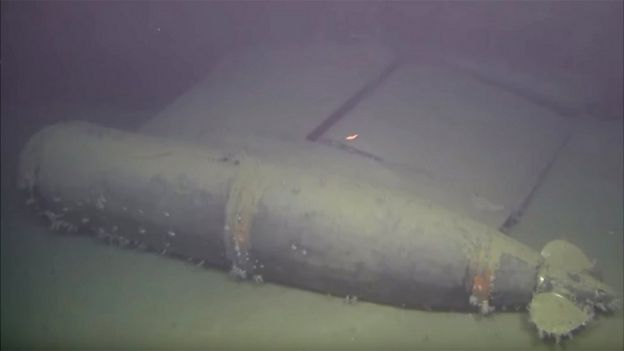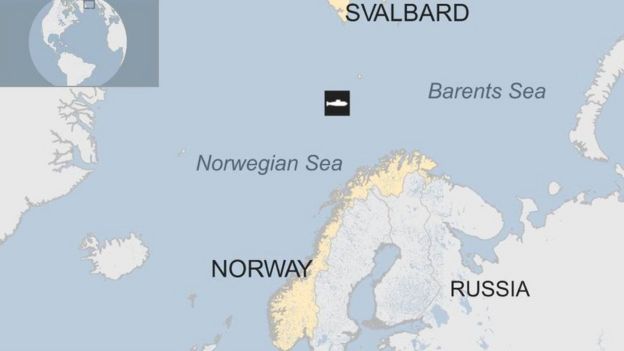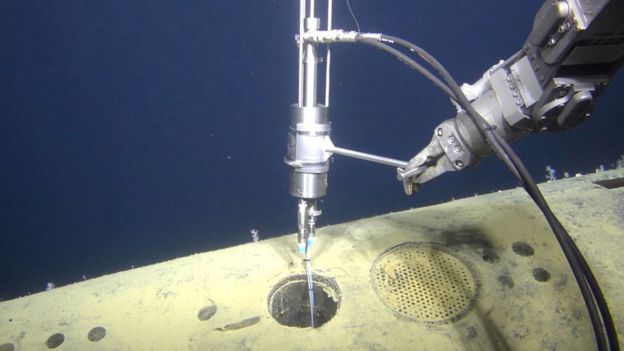 |
| The ROV revealed what looks like one of the sub's torpedoes |
Norway has found a radiation level 800,000 times higher than normal at the wreck of a Russian navy submarine that sank in the Norwegian Sea in 1989.
A sample showed radioactive caesium leaking from a ventilation pipe in the Komsomolets. But researcher Hilde Elise Heldal said it was "not alarming", as the Arctic water quickly diluted it.
The Soviet-era sub is also deep down, at 1,680m (5,512ft), and there are few fish in the area, she said.
A fire on board killed 42 sailors.
For the first time a Norwegian remotely-operated vehicle (ROV) examined and filmed the Komsomolets, on 7 July, revealing severe damage.
It is also known as K-278 in Russia, and it sank carrying two nuclear-tipped torpedoes. Its front section has six torpedo tubes, and the sub could also launch Granit cruise missiles.
The news comes just over a week after fire swept through a Russian nuclear-powered submersible in the Barents Sea, killing 14 naval officers.
The survivors managed to get the mini-sub back to its Arctic base.
Reactor shutdown
Norway's Radiation and Nuclear Safety Authority (DSA) says the pressurised water reactor powering K-278 in April 1989 shut down quickly when the fire broke out. Twenty-seven sailors managed to get out alive, using emergency rafts.

The radiation leak found this week came from a pipe near the reactor. It was 800Bq (becquerels) per litre, while the normal level in the Norwegian Sea is about 0.001Bq.
However, some other water samples from the wreck did not show elevated levels.
 |
| The ROV is shown here collecting samples from inside the titanium hull |
Russia has previously examined the wreck with a manned submersible, and found radiation leaking from the same section.
The Norwegian radiation specialists and marine researchers were accompanied by experts from Russia's Typhoon Research and Production Association.
"We took water samples from inside this particular duct because the Russians had documented leaks here both in the 1990s and more recently in 2007," said Ms Heldal, the expedition leader. "So we weren't surprised to find high levels here.
"The levels we detected were clearly above what is normal in the oceans, but they weren't alarmingly high", she said.
Norway and Russia have been monitoring radiation in the area regularly since the disaster, sometimes on joint expeditions.
Source: BBCNews

No comments:
Post a Comment
Add a Comment...